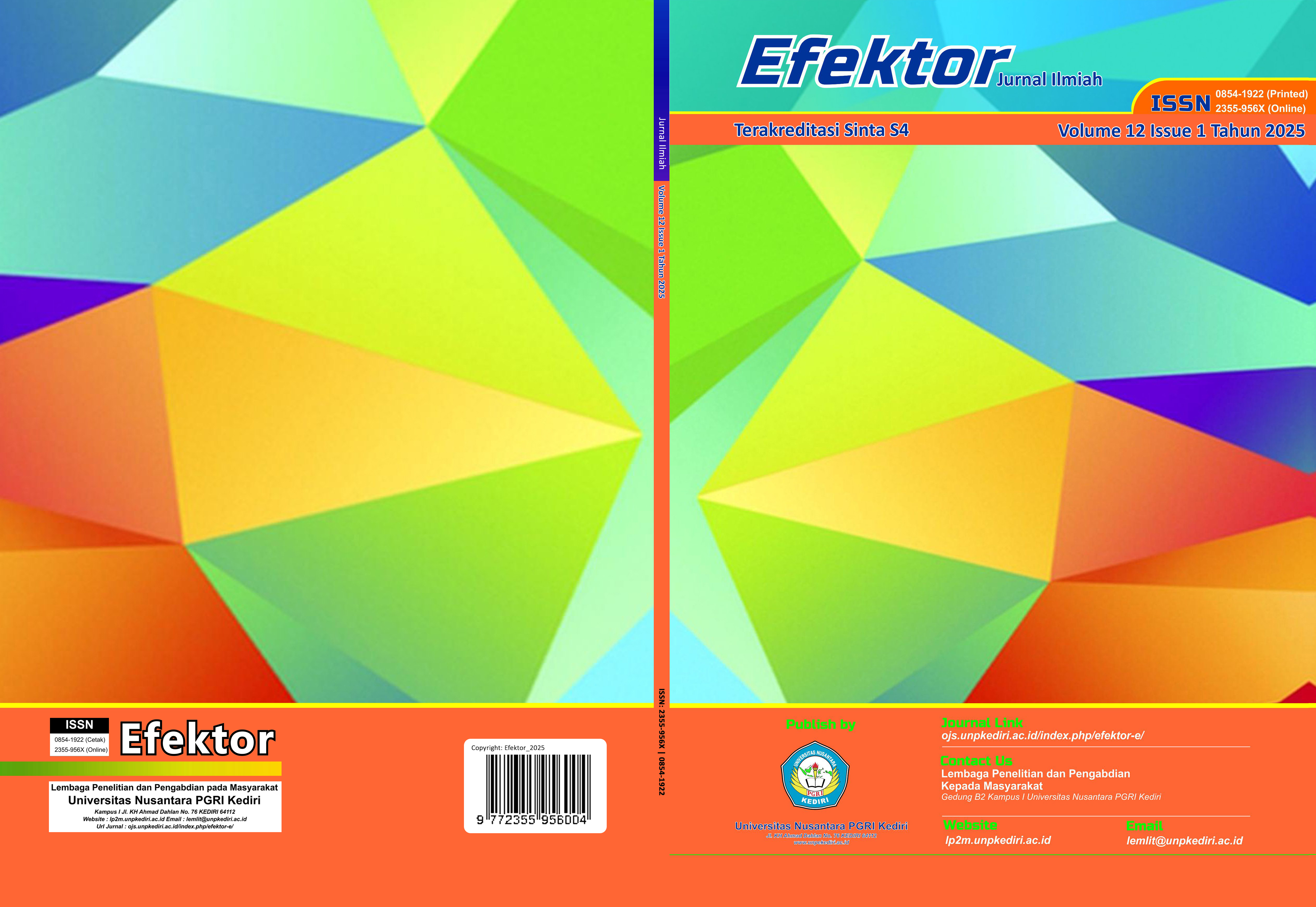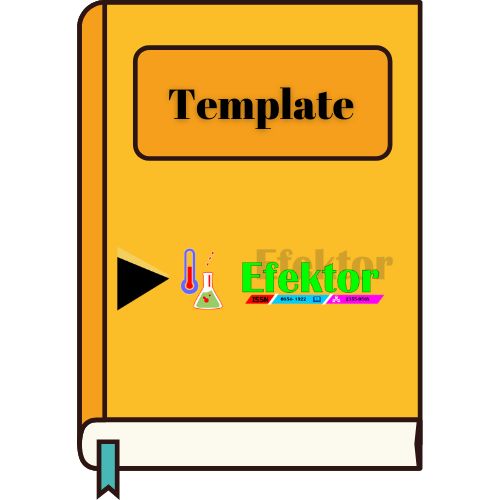Differences The Creative Problem Solving and Ideal Problem Solving Learning’s Models Oriented on Experiential Learning Reviewed from Learning Outcomes and Student Motivation
DOI:
https://doi.org/10.29407/e.v12i1.25181Keywords:
creative problem solving, experiential learning, ideal problem solving, learning achievement, learningAbstract
The problem in this study Lecturers apply lecture and assignment models, so that students do not understand the material on humans and their environment. The impact is that student motivation and learning outcomes decrease. To overcome this problem, Creative Problem Solving and IDEAL Problem Solving are applied which are oriented towards Experiential Learning. The research subjects are 1st semester PGSD students. The sample uses a random sampling technique of 2 classes. This study uses an Experimental method with a two-way ANOVA analysis technique with a 2x2 path. Learning outcome data uses tests and learning motivation data uses questionnaires with a Likert scale. The data analysis technique used for test data is SPSS, a significance level of 5% (0.05) Meanwhile, learning motivation data uses a questionnaire with a Likert scale with data interpretation 13-20: high motivation category and 0-12: low motivation category. The results of the study were 1) P-value model 0.842 > 0.05, then Ha was accepted, meaning that there was a difference in learning outcomes of students who received Creative Problem Solving treatment oriented to Experiential Learning and IDEAL Problem Solving oriented to Experiential Learning, 2) P-value motivation 0.001 <0.05, then Ha was rejected, meaning that there was no difference in motivation between students who were given lectures on the Creative Problem Solving model oriented to Experiential Learning and IDEAL Problem Solving oriented to Experiential Learning, 3) P-value interaction model with motivation 0.017 <0.05, then Ha was rejected, meaning that there was no interaction between the Creative Problem Solving model oriented to Experiential Learning and IDEAL Problem Solving oriented to Experiential Learning with student learning motivation.
References
Adnyana, M. E. (2020). Implementasi model pembelajaran STAD untuk meningkatkan motivasi dan prestasi belajar. Indonesian Journal of Educational Development (IJED), 1(3), 496-505.
Akhsani, L., Wardono, W., & Cahyono, A. N. (2024, February). Pengaruh Motivasi Belajar terhadap Kemampuan Berpikir Kreatif Mahasiswa pada Mata Kuliah Metode Numerik dengan Model IDEAL Problem Solving. In PRISMA, Prosiding Seminar Nasional Matematika (pp. 97-102).
Anwar, K., Yusuf, A., & Mindyarto, B. N. (2020). Social Skill in Problem Based Learning with Sociocultural Insight. Journal of Primary Education, 9(1), 78-84.
Aslamiah, S., Bulkani, B., & Rahmaniati, R. (2023). Perbedaan Hasil Belajar Peserta Didik Menggunakan Model Creative Problem Solving Dengan Problem Based Learning Berbantuan Media Audio Visual: Differences in Learning Outcomes of Students Using Creative Problem Solving Models with Problem Based Learning Assisted by Audio Visual Media. Bitnet: Jurnal Pendidikan Teknologi Informasi, 8(1), 39-46.
Arga, H. S. P., Rahayu, G. D. S., Altaftazani, D. H., & Pratama, D. F. (2019). Sumber Belajar IPS Berbasis Lingkungan. UPI Sumedang Press.
Chukwuyenum, A. N. (2013). Impact of critical thinking on performance in mathematics among senior secondary school students in Lagos State. IOSR Journal of Research & Method in education, 3(5), 18-25.
Dantes, N. (2023). Desain eksperimen dan analisis data. PT. RajaGrafindo Persada-Rajawali Pers.
DeHaan, R. L. (2009). Teaching creativity and inventive problem solving in science. CBE—Life Sciences Education, 8(3), 172-181.
Dunlap, J. C. (2005). Problem-Based Learning and Self-Efficacy: How a Capstone Course Prepares Students for a Profession. Journal of Educational Technology Research and Development , 53, 65–85.
Eksan, M. B. S., Wiguna, F. A., & Wahyu, N. (2017). Penerapan Creative Problem Solving (Cps) Dan Ideal Problem Solving Berbasis Pengalaman Nyata (Experiencing) Ditinjau Dari Motivasi Belajar Mahasiswa. KALAM CENDEKIA PGSD KEBUMEN, 5(1).
Famila Arian Sasqia Putri, F., Endang Sri Mujiwati, E. S. M., & Ilmawati, F. I. (2023). Pengembangan Media Booklet Materi Gaya Untuk Siswa Kelas Iv Mi Miftahul Huda Kabupaten Kediri (Doctoral dissertation, Universitas Nusantara PGRI Kediri).
Hafidzhoh, K. A. M., Madani, N. N., Aulia, Z., & Setiabudi, D. (2023). Belajar bermakna (meaningful learning) pada pembelajaran tematik. Student Scientific Creativity Journal, 1(1), 390-397.
Imron, I. F. (2018). Pengaruh Penerapan Pendekatan Scientific dengan Model Pembelajaran Berbasis Masalah Terhadap Keterampilan Sosial Siswa Materi Manusia dan Lingkungannya di Sekolah Dasar. Pendas: Jurnal Ilmiah Pendidikan Dasar, 3(1), 103-109.
Imron, I. F. (2021). The Ability of Elementary School Students in Compiling Puzzles on the Pancasila Symbol Material. AL-ISHLAH: Jurnal Pendidikan, 13(1), 117-125.
Lumsdaine, E., & Lumsdaine, M. (1994). Creative problem solving. IEEE Potentials, 13(5), 4-9
Muslikhah, I., & Nuruddin, M. (2025). Pengaruh Model Pembelajaran Creative Problem Solving Terhadap Motivasi Belajar Siswa Pada Pembelajaran Pendidikan Pancasila. Al-Adawat: Jurnal Pendidikan Guru Madrasah Ibtidaiyah, 4(01), 37-44.
Naswa, N. L., Kurnianti, E. M., & Hasanah, U. (2023). Penerapan Model Problem Based Learning Dalam Pelajaran Ips Untuk Meningkatkan Kemampuan Memecahkan Masalah Siswa Sekolah Dasar. Jurnal Genta Mulia, 14(2).
Nurrawi, A. E. P., Zahra, A. T., Aulia, D., Greis, G., & Mubarok, S. (2023). Motivasi belajar siswa terhadap hasil belajar matematika. Plusminus: Jurnal Pendidikan Matematika, 3(1), 29-38.
Ratih, N. P. A. (2020). Penerapan Model Experiential Learning Untuk Meningkatkan Kemampuan Menulis Puisi Siswa Kelas Viii C Smpn 3 Penebel. Jurnal Pendidikan Dan Pembelajaran Bahasa Indonesia, 9(1), 46–56. https://doi.org/10.23887/jppbi.v9i1.3205
Rachman, A., & Rosnawati, R. (2021). Efektivitas model pembelajaran creative problem solving ditinjau dari kemampuan penalaran, komunikasi, dan self esteem. Jurnal Riset Pendidikan Matematika, 8(2), 231-243.
Santika, K. D., Suciati, S., & Antrakusuma, B. (2023). Effectiveness of the IDEAL Problem Solving Model Based onOpen-Ended Questions onthe Creative Thinking Skills of Grade VII Students. Phenomenon: Jurnal Pendidikan MIPA, 13(1), 47-61.
Setyarini, P. (2014). PERBEDAAN HASIL BELAJAR SISWA DALAM PBM TIPE CREATIVE PROBLEM SOLVING DAN PBM DI SMK NEGERI 2 TUBAN Prabawati Setyarini. Jurnal Pendidikan Akuntansi (JPAK), 2(2).
Suprapto, N., & Wahyuni, T. (2020). The Effect of Problem Solving Learning Models on Students’ Motivation and Learning Outcomes. Journal of Physics: Conference Series, 1521(2), 022085.
Syaadah, R., Ary, M. H. A. A., Silitonga, N., & Rangkuty, S. F. (2022). Pendidikan formal, Pendidikan non formal Dan Pendidikan informal. PEMA, 2(2), 125-131.
Treffinger, D. J. (1995). Creative problem solving: Overview and educational implications. Educational psychology review, 7, 301-312
Yasin, I. (2022). Guru profesional, mutu pendidikan dan tantangan pembelajaran. Ainara Journal (Jurnal Penelitian Dan PKM Bidang Ilmu Pendidikan), 3(1), 61-66.
Downloads
Published
Versions
- 2025-05-24 (2)
- 2025-05-24 (1)
Issue
Section
License
Copyright (c) 2025 ilmawati Fahmi Imron

This work is licensed under a Creative Commons Attribution-ShareAlike 4.0 International License.
Authors who publish with this journal agree to the following terms:
- Copyright on any article is retained by the author(s).
- The author grants the journal, the right of first publication with the work simultaneously licensed under a Creative Commons Attribution License that allows others to share the work with an acknowledgment of the work’s authorship and initial publication in this journal.
- Authors are able to enter into separate, additional contractual arrangements for the non-exclusive distribution of the journal’s published version of the work (e.g., post it to an institutional repository or publish it in a book), with an acknowledgment of its initial publication in this journal.
- Authors are permitted and encouraged to post their work online (e.g., in institutional repositories or on their website) prior to and during the submission process, as it can lead to productive exchanges, as well as earlier and greater citation of published work.
- The article and any associated published material is distributed under the Creative Commons Attribution-ShareAlike 4.0 International License













